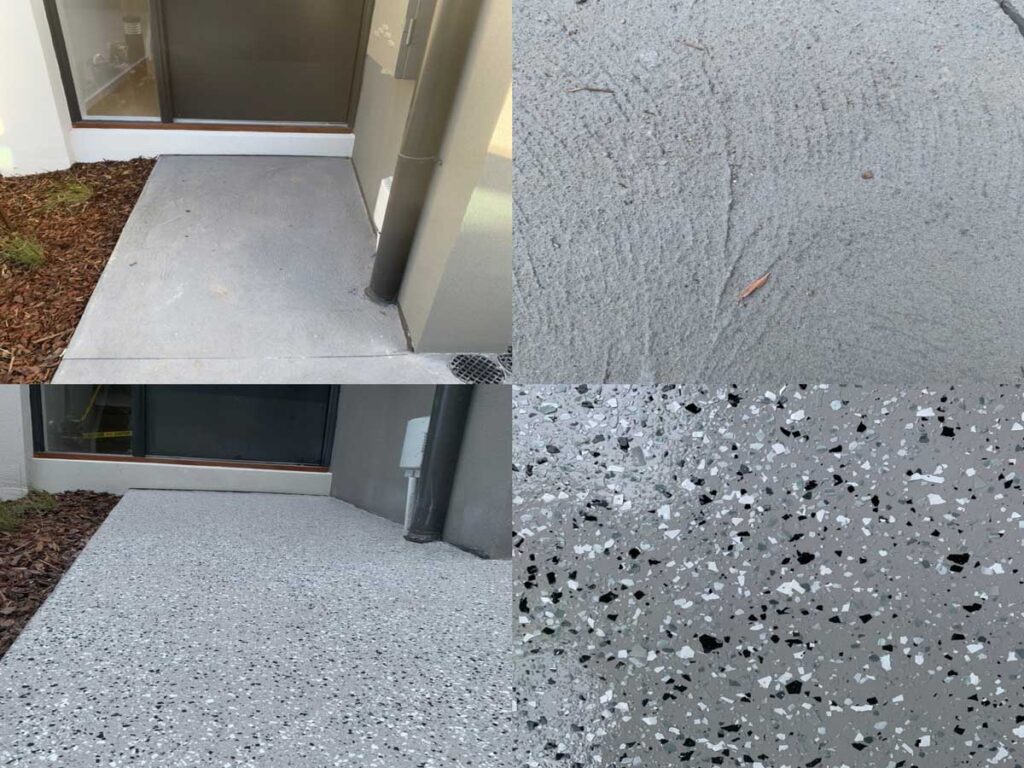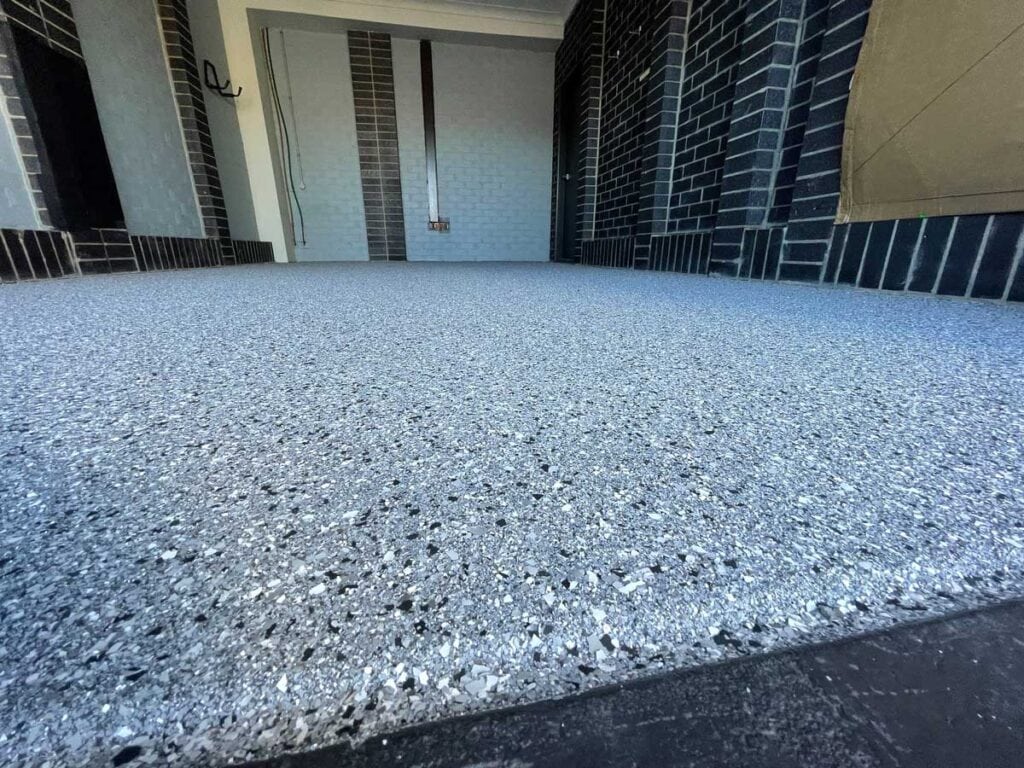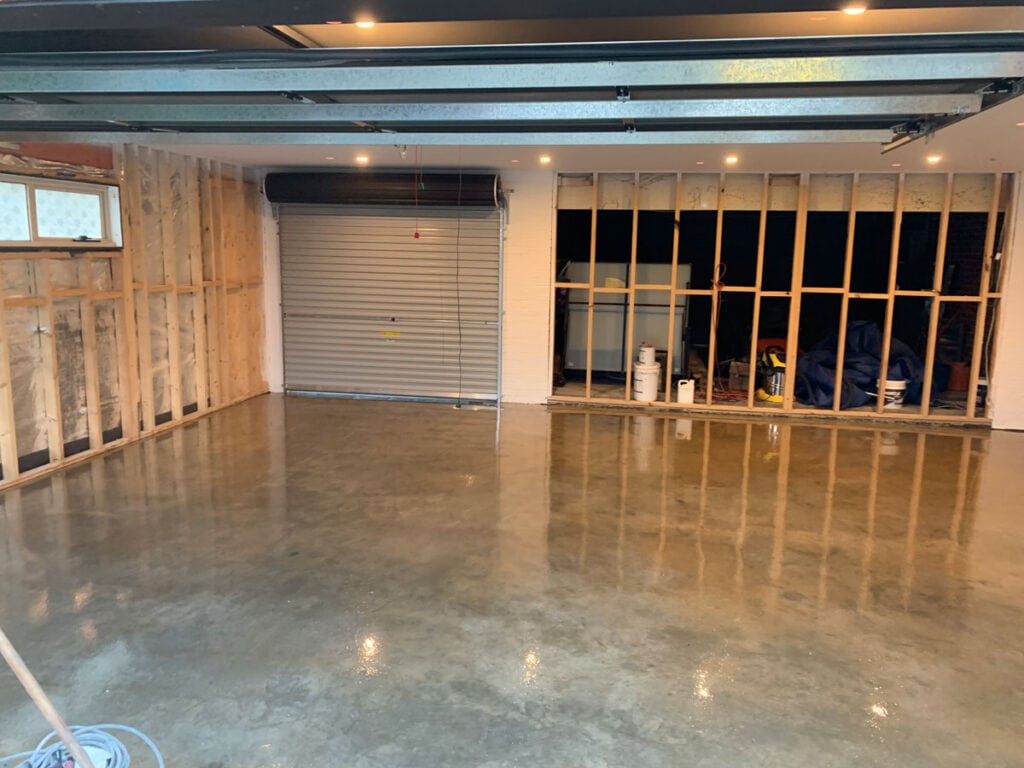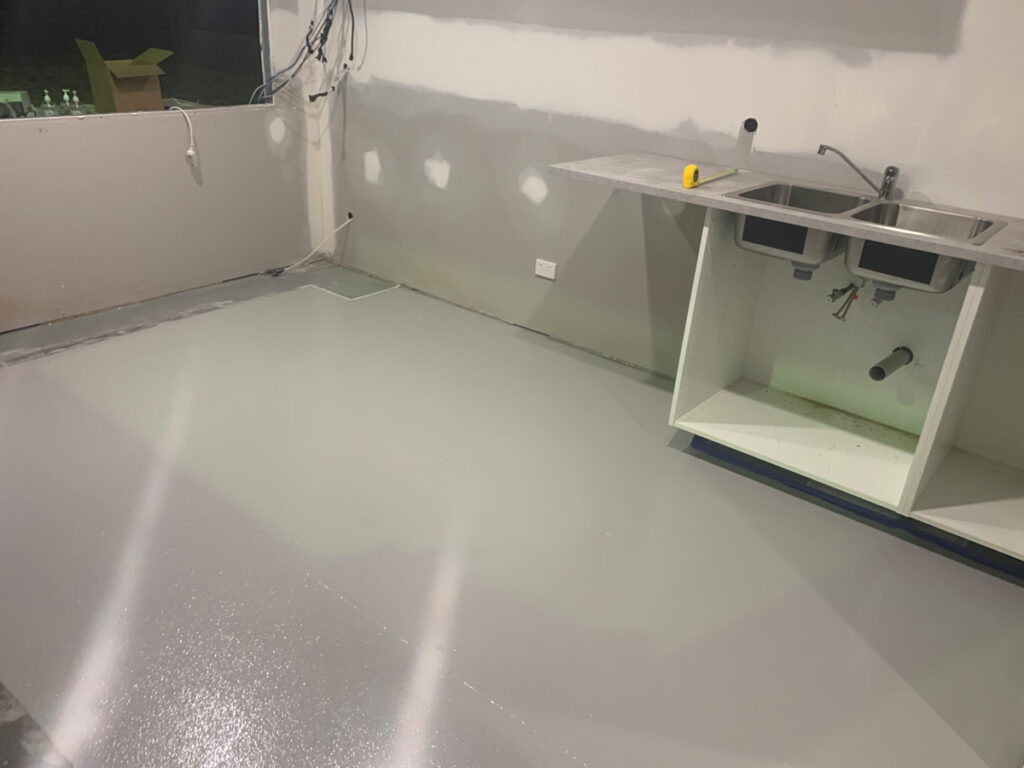Changing the look of a single household item can have a major impact on the overall ambience of a room. Putting epoxy resin on your staircase is a great project if you enjoy home improvement and are looking to make a change. This is a fun and easy way to put your imagination to work while also giving your staircase a facelift.
You can use epoxy resin to cover just about anything. The surface in question could be made of anything, including time, concrete, or nothing at all. If you carefully follow the steps in the installation manual, you should be able to apply epoxy resin to any staircase.
Should You Put Epoxy On Stairs?
Coating a staircase in epoxy resin has many benefits. Epoxy resin is a practical option for homeowners who want to improve the stability and aesthetic appeal of their staircases. Prepare the stairs by applying epoxy.
The application of epoxy resin to your staircase may provide you with some unexpected benefits. A staircase's natural deterioration can be slowed with an epoxy coating. Not slipping on the floor is another benefit. If your steps get wet from rain or snow often because they are near the front door, you may want to consider epoxy coating them. It's a brilliant idea to use epoxy glue on the steps of your staircase. It can protect surfaces from wear and make them safer to walk on. Assuming you have the right equipment, a spotless surface, and the necessary expertise, you can apply epoxy resin to your stairs.
Benefits Of Epoxy Flooring On Stairs
Durability
Any flooring option must be carefully considered for its durability. In high-traffic environments, such as those that operate around the clock, the necessity of cordoning off rooms might impede the access of both customers and employees. Epoxy flooring and other resinous systems have a distinct benefit due to their long service life. A facility's bottom line might benefit greatly from the capacity to lengthen the duration between replacement cycles, thus reducing the frequency of such downtimes. Modern quick-drying formula help minimise disruption to building owners and tenants during flooring installations.
In contrast, many issues arise when a floor fails to hold. Damaged traffic lanes create safety issues, especially on stairs where falls are more likely to result in serious injury and the time and financial expenses of insufficiently durable coatings. Even with regular cleaning, dirt, debris, and spilt liquids can accumulate in spots where the concrete surface is cracked, raised, or otherwise damaged. A hole on the floor provides mould and other microbes with a dark, moist place to grow and spread. Because it is fluid-applied and nearly seamless, high-performance epoxy flooring bonds directly to the prepared concrete surface, making it an attractive option.
Slip Resistance
In addition to being a major risk to the safety of employees and visitors, slip and fall accidents in a business's premises can lead to expensive personal injury lawsuits. Facility managers must discuss slip-resistance requirements with their clients in all contexts, notably in healthcare, institutional, and educational facilities where patients, residents, and students may have limited mobility. Staff employees also need to think and act swiftly and boldly in high-pressure situations, such as those in public safety, healthcare, education, and the hospitality industries. A well-profiled floor finish can contribute to increased security and productivity.
The importance of nonslip flooring increases when installed on stairs and stairwells. Coating methods for concrete floors, such as epoxy, can be adjusted to provide varying degrees of slip resistance, allowing installers to tailor their products to meet the needs of individual customers.
Aesthetics
Every part of the building, from the open atrium with its prominent staircase to the covered stairwell serving as an emergency exit, contributes to the cohesiveness of the whole. Aesthetically pleasant interiors, as is now being documented by science, can significantly influence occupants' moods, leading to happier, more motivated staff, better client service, and a thriving business overall.
Facility managers no longer have to choose aesthetics over durability and safety with epoxy and other fluid-applied flooring technologies. An almost infinite number of colour combinations are available, not to mention decorative aggregates, metallics, and flake blends. Some producers even provide made-to-order colour combinations. Furthermore, resinous floor coatings provide a one-of-a-kind opportunity to place long-lasting safety or direction marks and any number of embedded brand logos and aesthetic images.
What Preparations Are Necessary Before Applying Epoxy On Stairs?
The success of a project greatly depends on how well the site is prepared in advance. Putting on epoxy could be a piece of cake if you're careful. It's important to make sure you have all the materials for a DIY project before you start working on it.
Make sure your stairs are not completely level before you begin preparing them. The adhesion of the epoxy will be compromised by a too-smooth surface. Etching, grinding, or acid washing the floor is required. A sandblaster or diamond grinder will do the trick here. After the stairs have been thoroughly sanded and ground, the epoxy resin can be applied.
If you have the right tools and carefully follow the instructions, applying epoxy shouldn't be difficult. If you want the advantages to last, though, your staircase's surface can't be too smooth. Smooth surfaces are not good for adhering epoxy. Sanding, grinding, or acid-washing the steps is required prior to applying the epoxy resin.
Applying Epoxy To Stairs
Do-it-yourself home improvements can be challenging. If you do everything exactly as it says, you should have good results. You can apply the epoxy resin once you've cleaned the area and gathered the right tools.
The application of the epoxy follows the necessary cleaning and sanding of the surface. Use a roller to apply the epoxy primer. Let it dry for at least a day. Then, roll out the epoxy using the roller. If you want an even, thin layer, use a wet roller every time. For best results, wait 24 hours. Look for flaws and fix them with colour. Getting ready to use epoxy resin is the most challenging part of working with the material. Sand and grind the area to remove debris and make sure there is no moisture left before applying the epoxy.
Once the surface is ready, an epoxy primer can be rolled on. Let it dry for at least a day. Apply the first coat of resin by rolling it on with care after thoroughly mixing it as directed. Please give this a full 24 hours to dry. After checking for imperfections, you can apply a second coat of resin. This coat, too, will need a full day to dry. If after the second coat has dried you are pleased with the result, you are finished painting. You can apply epoxy to your stairs on your own if you're well-prepared, have the right tools, and follow the right application steps.
Safe Steps And Stairs Epoxy Flooring
It is critical for the safety of pedestrians that the stair treads be in good condition. However, carpet, tile, and vinyl all wear out quickly under foot traffic and become trip hazards if they chip, split, or lift. Epoxy flooring for stairs and steps is the best option if you're looking for a durable surface that won't wear down easily and will help keep your employees, customers, or anyone else who uses your building safe.
Reduce The Possibility Of Falls And Slips
When thinking about a building's layout or potential floor upgrades, staircases aren't always given the attention they deserve. However, stairs can be a tripping or falling hazard in any setting, so it's the responsibility of facility managers to make sure that everyone who uses them does so with a sense of security.
Staircases benefit greatly from epoxy's slip-resistance thanks to the material's textured, coarse finish. Consequently, Epoxy should be taken into account as a potential material choice when creating high-traffic stair designs or resurfacing worn, smooth, potentially hazardous steps. Epoxy flooring's ribbed design is what makes it slip-resistant. These stair treads' textured, nonabrasive surface, crafted from tiny marble pieces and premium resins, improves grip regardless of weather conditions.
Exterior Fire Escapes and Staircases
Stairs provide an alternative route to the outdoors for many building occupants, making it imperative that they be well-maintained and protected from the elements in the event of an emergency requiring rapid egress. Epoxy flooring's slip-resistant surface helps to protect against accidents even in wet or icy weather when installed on essential and potentially life-saving escape routes. Someone's life may depend on this.
To create a safer, sandpaper-like finish, epoxy flooring benefits from having an additional non-slip component added to the final glaze coat. For exterior stairways or other areas that frequently experience wet or icy conditions, this is done to prepare the floor.
Hygienic And Sanitary Stair Flooring
There is nowhere for dirt or germs to hide in the flawless finish of Epoxy flooring.
Joints and seams in many stair coverings collect debris and bacteria, which can be harmful to the substrate and stair treads. The damage caused by germs can be costly to repair and can render the stairs unsafe or unusable if they are ignored. Epoxy flooring protects your stair treads from germ damage and creates safer, smoother, and cleaner walkways because it contains an antimicrobial component that is registered.
Do Safe Stairs Have To Be Boring?
Not! Epoxy floors combine the best features of both aesthetically pleasing and functional commercial and industrial stairs.
With the largest colour palette of any flooring material, epoxy floors can be customised to perfectly match a business's brand colours without sacrificing style. See how the most popular shades of epoxy flooring can make your stairs and steps stand out in a commercial or manufacturing environment by clicking here.
Epoxy flooring's seamless nature makes it ideal for commercial and retail settings where foot traffic must flow unimpeded from the entrance to the stairwell.
Conclusion
Epoxy flooring can be applied to stairs to improve stability and aesthetic appeal. It can be applied to any surface, including time, concrete, or nothing at all. The application process is simple and requires careful preparation, including cleaning the area and gathering the right tools. The process involves applying epoxy primer, sanding and grinding the surface, and applying the epoxy roller. The process can be done with a roller, allowing the primer to dry for at least a day, then rolling out the epoxy using the roller. For best results, wait 24 hours and look for flaws and fix them with color.
Epoxy flooring offers several benefits, including durability, slip resistance, and aesthetics. Durability is crucial in high-traffic environments, where a floor's service life can be extended, reducing downtimes and minimizing disruptions. Slip resistance is also crucial, as it can be adjusted to meet individual customer needs.
Preparations for applying epoxy on stairs are essential, with the right tools and equipment needed. A well-prepared site is crucial for successful application. A sandblaster or diamond grinder can be used to ensure a smooth surface, but a sandblaster or diamond grinder can also be used.
Applying epoxy to stairs can be challenging, but with proper preparation and proper tools, the benefits of epoxy flooring can be significant. Epoxy flooring is a durable and safe option for stairs and steps, providing a textured, nonabrasive surface that improves grip and safety. Its ribbed design makes it slip-resistant, making it ideal for high-traffic stair designs or resurfacing worn, smooth steps. Epoxy flooring also reduces the possibility of falls and slips, making it a suitable material choice for outdoor fire escapes. The non-slip component added to the final glaze coat ensures a safer, sandpaper-like finish.
Additionally, epoxy flooring is hygienic and sanitary, as it protects stair treads from germ damage and creates safer, smoother, and cleaner walkways. With its largest color palette, epoxy floors can be customized to match a business's brand colors without sacrificing style. Its seamless nature makes it ideal for commercial and retail settings where foot traffic must flow unimpeded from the entrance to the stairwell.
Content Summary
- Epoxy resin can be used to cover and improve the stability and aesthetic appeal of staircases.
- Coating stairs with epoxy resin can slow down natural deterioration and provide a non-slip surface.
- Epoxy flooring on stairs offers benefits such as durability, slip resistance, and enhanced aesthetics.
- Proper preparation is crucial before applying epoxy on stairs, including ensuring the surface is not too smooth.
- Etching, grinding, or acid washing may be necessary to prepare the stairs for epoxy application.
- DIY epoxy application requires following instructions carefully and using the right tools.
- Epoxy flooring provides long service life and reduces the frequency of replacement cycles.
- Slip resistance is important for stairs, and epoxy coatings can be adjusted to meet specific requirements.
- Epoxy flooring offers a wide range of colors, decorative options, and the opportunity for embedded logos.
- The success of an epoxy project depends on thorough surface preparation and following application steps.
- Epoxy on stairs enhances safety, reduces tripping hazards, and keeps pedestrians secure.
- Epoxy flooring on stairs provides a textured, slip-resistant surface, improving grip even in wet conditions.
- Epoxy flooring is suitable for exterior fire escapes and staircases, offering slip resistance in various weather conditions.
- Epoxy flooring is hygienic and easy to clean, preventing the collection of debris and bacteria on stair surfaces.
- Epoxy floors can be customized with a wide range of colors to match a business's brand and enhance aesthetics.
- Epoxy flooring's seamless nature ensures smooth flow of foot traffic from the entrance to the stairwell.
Frequently Asked Questions
Epoxy resin can cover cantilever, spiral, or modular stairs and concrete or tile staircases, whether inside or outside.
Epoxy flooring for steps and stairs is the best option if you need a long-lasting and resilient stair covering to ensure the safety of your employees, customers, or other facility users.
Because epoxy, polyuria, and polyurethane are non-porous, the surface of coated garage floors made with these resins is typically quite smooth. While this type of surface is functional when dry, it becomes hazardous when introducing water, oils, or mud.
If gas spills on an epoxy floor, it must be cleaned immediately to prevent permanent damage. Any spills of paint, cleaning products, or other abrasive liquids must be attended to immediately.
Epoxy is great for any use in the great outdoors. These external coatings come in various colours, patterns, and textures, and they all endure a long time and look great. It can be a material for your driveway, sidewalk, front steps, pool deck and patio.
- How To Keep Epoxy Floors Shiny? - July 19, 2023
- Epoxy Paint Vs Epoxy Coating: What’s The Difference? - July 18, 2023
- Can Epoxy Flooring Be Used In Bathrooms? - July 18, 2023







